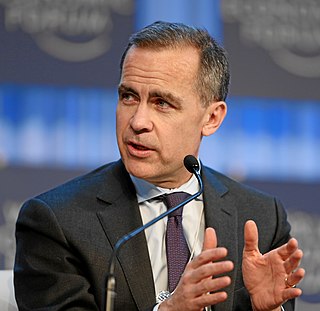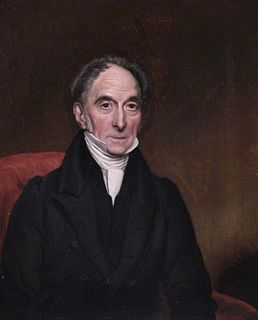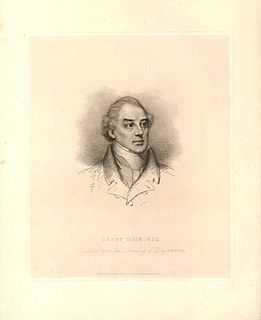Related Research Articles

A retail cashier or simply a cashier is a person who handles the cash register at various locations such as the point of sale in a retail store. The most common use of the title is in the retail industry, but this job title is also used in the context of accountancy for the person responsible for receiving and disbursing money or within branch banking in the United Kingdom for the job known in the United States as a bank teller.

The Governor of the Bank of England is the most senior position in the Bank of England. It is nominally a civil service post, but the appointment tends to be from within the bank, with the incumbent grooming his or her successor. The Governor of the Bank of England is also Chairman of the Monetary Policy Committee, with a major role in guiding national economic and monetary policy, and is therefore one of the most important public officials in the United Kingdom.

The Chief Cashier of the Bank of England is the person responsible for issuing banknotes at the Bank of England and is the director of the divisions which provide the Bank of England's banking infrastructure. This person is known to the general public because since 1870 the Chief Cashier's signature is printed on all bank notes issued by the Bank of England. In 2004 a new post was created, Executive Director of Banking & Chief Cashier, incorporating the title.
John Kendrick was the first Chief Cashier of the Bank of England.
Thomas Madockes was the Chief Cashier of the Bank of England from 1699 to 1739. Madockes was replaced as Chief Cashier by James Collier and Daniel Race.
Sir Ernest Musgrave Harvey, 1st Baronet, KBE, (1867–1955) was the Chief Cashier of the Bank of England from 1918 to 1925. Harvey was replaced as Chief Cashier by Cyril Patrick Mahon. He was Deputy Governor 1929 to 1936.

Thomas Rippon (1760–1835) was the Chief Cashier of the Bank of England from 1829 to 1835. Rippon was replaced as Chief Cashier by Matthew Marshall.

Henry Hase was the Chief Cashier of the Bank of England from 1807 to 1829. Hase was known as "the reluctant cashier" and appointed after Robert Aslett was discovered to have embezzled £500,000. Hase was replaced as Chief Cashier by Thomas Rippon.
Sir Gerard Conyers was an English banker and Lord Mayor of London.
William Thompson was Governor of the Bank of England from 1725 to 1727. He had been Deputy Governor from 1723 to 1725. He replaced Gilbert Heathcote as Governor and was succeeded by Humphry Morice.
Bryan Benson was Governor of the Bank of England from 1735 to 1737. He had been Deputy Governor from 1733 to 1735. He replaced Horatio Townshend as Governor and was succeeded by Thomas Cooke.
Thomas Cooke was an English merchant and banker. He was Governor of the Bank of England from 1737 to 1740. He had been Deputy Governor from 1735 to 1737. He replaced Bryan Benson as Governor and was succeeded by Delillers Carbonnel.
Delillers Carbonnel was a British banker who was Governor of the Bank of England from 1740 to 1741.
William Ewer was an English merchant, banker and politician who sat in the House of Commons between 1765 and 1789.
George Peters was Governor of the Bank of England from 1785 to 1787. He had been Deputy Governor from 1783 to 1785. He replaced Richard Neave as Governor and was succeeded by Edward Darell.
Daniel Giles was a London merchant and banker, the son of Huguenot immigrant parents.
Joseph Nutt was Governor of the Bank of England from 1802 to 1804. He had been Deputy Governor from 1801 to 1802. He replaced Job Mathew Raikes as Governor and was succeeded by Benjamin Winthrop.
Sheffield Neave (1799–1868) was an English merchant and Governor of the Bank of England from 1857 to 1859.
Alfred Latham (1801–1885) was an English businessman and banker, born in Camberwell to Thomas Latham (1746–1818), a merchant and plantation owner, and his wife, Ann Jones. Inheriting wealth, Latham went into business in 1824, and went into partnership in what became the Arbuthnot Latham bank in 1833, with John Alves Arbuthnot (1802–1875).
Henry Lancelot Holland was Governor of the Bank of England from 1865 to 1867. He had been Deputy Governor from 1863 to 1865. He replaced Kirkman Daniel Hodgson as Governor and was succeeded by Thomas Newman Hunt. Holland's tenure as Governor occurred during the Panic of 1866.
References
- ↑ Lawson, William John (1852). The History of Banking: With a Comprehensive Account of the Origin, Rise, and Progress of the Banks of England, Ireland, and Scotland. Gould and Lincoln. p. 42.
- ↑ "Chief Cashiers". Bank of England. 2018-06-01. Retrieved 2019-09-03.
| This British biographical article is a stub. You can help Wikipedia by expanding it. |